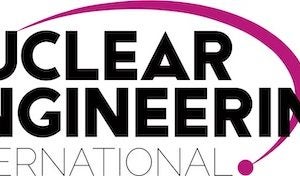Above: Fukushima Daiichi NPS today
ALTHOUGH TEN YEARS HAS PASSED since the Great East Japan Earthquake and the subsequent accident at Fukushima Daiichi nuclear power station (Fukushima Daiichi NPS) on 11 March 2011, the mission of safely decommissioning the damaged power plant and thereby contributing to the revitalization of Fukushima remains unchanged.
In performing this crucial work, we are guided by the principle of “balancing recovery of Fukushima with decommissioning of Fukushima Daiichi NPS,” doing everything possible to mitigate the risks as we progress. Since the accident on 11 March 2011, we have stabilized the site and alleviated many of its crisis aspects.
Most significantly, we have been making efforts to improve the working environment by reducing the contamination on the site due to the accident. About 4000 workers are currently engaged in the decommissioning work at the power station. Monthly average exposure dose for those workers has been reduced to 0.3 millisieverts (30 millirem) from 21.55 millisieverts immediately following the accident. About 96% of the site’s area does not require wearing coveralls or full-face masks. This greatly contributes to safety, as communication among workers is greatly enhanced by the absence of the respirator masks. Of course, they are required to wear less restrictive masks as a COVID-19 countermeasure.
In making this significant progress, we have received a great deal of technical and personal support from home and abroad, for which I am sincerely grateful.
Looking ahead
The decommissioning of Fukushima Daiichi NPS is without precedent. The work will continue for decades and new technologies and processes are required to be continuously developed for it. These technologies and the knowledge gained from our work have the potential to make broader contributions to the world’s future development not only in nuclear plants but also other industries. We have already begun sharing that knowledge widely.
The decommissioning work at Fukushima Daiichi NPS is guided by the “Mid-and-Long-Term Decommissioning Action Plan.” This was created by TEPCO for identifying the main work processes involved in decommissioning as a whole, in order to achieve the goals laid out in the government’s “Mid-and-Long-Term Roadmap” and the risk reduction map produced by the Nuclear Regulatory Authority. FDEC (Fukushima Daiichi Decontamination and Decommissioning Engineering Company) has been restructured to carry out that action plan, which is organized into four main areas, in addition to continuous improvement of the working environment:
Contaminated water management
Managing water on the site requires a multi-layered approach that includes diversion of as much water as possible. The amount of contaminated water generated in 2020 was approximately 140 m3/day, surpassing our goal of reducing contaminated water to 150 m3/day in line with our Mid-and-Long-Term Roadmap. The amount of contaminated water currently generated has decreased by close to two thirds since the peak period. For the water that does become contaminated, successful management requires containment, treatment, and storage. Most contaminated water on the site has been treated by the Multi-nuclide Removal Equipment (ALPS), and is being stored safely. We are currently storing about 1.2 million cubic meters of ALPS treated water in about 1000 tanks on site. We are providing information to the public through our Treated Water Portal Site* and by other means.
Fuel removal
Removal of fuel assemblies stored in the spent fuel pools requires that we first clear rubble generated by the accident and reduce high radiation levels. So far, removal was completed at unit 4 (which was not operating at the time of the accident) in December 2014, and is currently underway at unit 3, aiming to finish by the end of March 2021. Fuel removal from the spent fuel pools at all remaining units is planned for completion by 2031.
Fuel debris retrieval
At the time of the 2011 accident, the fuel powering the active units melted and re-solidified in different ways in each of the three reactors. Retrieving that solidified fuel debris is the pivotal, as well as the most challenging, objective of decommissioning. We have been determining its condition and location, and developing technologies for its safe retrieval. Those activities include visual investigations inside the primary containment vessels, and preparations for the first small-scale trial retrieval at unit 2, using a robot arm being developed in cooperation with the United Kingdom. Following the trial retrieval, the scale of retrieval is expected to increase gradually as more experience is gained.
Waste management
Solid waste, such as rubble, used protective gear, felled trees, etc, has been safely stored and has been reduced in volume through incineration, etc. Additional efforts to determine safe methods of processing and disposing of solid waste are continuing.
Above: Sakura Street, Fukushima Daiichi NPS
Moving forward
As we move forward with this unprecedented decommissioning challenge, the key is to inspire the spirit in our human resources to meet that challenge, as well as to learn from the experience we gain each day in our field work. In addition, in order to make progress safely as well as steadily, the trust and confidence not only of local communities and parties concerned, but also of the broader public, are essential. So, we pledge to continue to provide as much information as possible in an easy-to-understand manner, at home and abroad, to be worthy of that trust.
As we observe on 11 March this year, the tenth anniversary of the accident at the Fukushima Daiichi NPS, TEPCO management and employees are determined to never forget what occurred. We will continue to reflect the learnings from the incident in our corporate culture and move forward as a company that is truly dedicated to serving people and the community.
*Treated Water Portal Site: https://www.tepco.co.jp/en/decommission/progress/watertreatment/index-e.html
Author details: Akira Ono, Chief Decommissioning Officer of Tokyo Electric Power Company Holdings, Inc., and President of the Fukushima Daiichi Decontamination and Decommissioning Engineering Company (FDEC)








